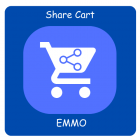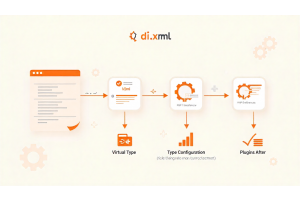Boost Your Store’s Success with Effective Ecommerce Sales Tracking

Boost Your Store’s Success with Effective Ecommerce Sales Tracking
Table of Contents
- Understanding the Importance of Ecommerce Sales Tracking
- Key Metrics to Monitor for Ecommerce Success
- Setting Up Ecommerce Sales Tracking Tools
- Analyzing Customer Behavior for Improved Sales
- Using Sales Data to Optimize Marketing Strategies
- Tracking Conversion Rates to Boost Revenue
- Identifying Trends to Stay Ahead of Competitors
- Enhancing Customer Retention Through Data-Driven Insights
Understanding the Importance of Ecommerce Sales Tracking
Ecommerce sales tracking is the foundation of data-driven decision-making for any online store. It allows businesses to monitor their performance, understand customer behavior, and pinpoint strengths and weaknesses in their operations. Without accurate tracking, you risk making decisions based on assumptions, leading to missed opportunities and inefficiencies.
Sales tracking provides insights into how well your marketing strategies are working, how effectively your website converts visitors into customers, and how your products perform in different market segments. It’s more than just revenue—it’s about tracking the entire customer journey from awareness to conversion and beyond. By keeping a close eye on these metrics, you can adapt to changing market conditions and continuously optimize your store’s performance.
Key Metrics to Monitor for Ecommerce Success
To make the most of ecommerce sales tracking, you need to focus on the right metrics. These key performance indicators (KPIs) give you a comprehensive view of your store’s health and help you identify areas that need improvement. Here are some of the most important metrics to track:
Total Sales: This is the total revenue generated from all sales in a given period. It provides an overall picture of your store’s financial performance. Conversion Rate: The percentage of visitors who complete a purchase. This is a crucial metric that shows how effectively your website is turning visitors into customers. Average Order Value (AOV): The average amount spent by customers per transaction. A higher AOV means that customers are buying more per visit, which can lead to greater profitability. Customer Acquisition Cost (CAC): The total cost of acquiring a new customer, including marketing, advertising, and sales expenses. A low CAC means you’re acquiring customers efficiently. Customer Lifetime Value (CLV): The total revenue expected from a single customer over their relationship with your store. This metric helps you understand the long-term value of your customers and guide retention strategies. Cart Abandonment Rate: The percentage of visitors who add items to their cart but leave before completing the purchase. A high cart abandonment rate may indicate issues with your checkout process or shipping costs.
Tip
If you offer your SEO texts in several languages or localize them for different regions, your pages may be incorrectly classified as duplicate content. However, there is a simple solution to this in the form of hreflang. Our article explains what you need to bear in mind when using hreflang.
Read more about hreflangSetting Up Ecommerce Sales Tracking Tools
To effectively track sales, you need the right tools in place. Fortunately, there are several powerful platforms designed to help you monitor ecommerce metrics, including:
Google Analytics: Google’s free tool provides detailed insights into your website’s performance, including traffic sources, user behavior, and conversion rates. It’s a must-have for any ecommerce business. Shopify/WooCommerce Analytics: Most ecommerce platforms come with built-in analytics tools. These dashboards provide real-time data on sales, inventory, and customer behavior specific to your store. CRM Tools: Customer relationship management platforms like Salesforce or HubSpot help track customer interactions across channels, giving you a more holistic view of your sales pipeline. Email Marketing Tools: Tools like Mailchimp or Klaviyo track the effectiveness of email campaigns, helping you understand how email marketing contributes to sales. Heatmaps & Session Recordings: Tools like Hotjar or Crazy Egg show you how visitors interact with your site, allowing you to optimize user experience and improve conversion rates.
Analyzing Customer Behavior for Improved Sales
One of the most valuable aspects of ecommerce sales tracking is understanding how your customers behave on your site. Are they browsing for a while and then leaving? Are they getting stuck at a certain point in the checkout process? Analyzing customer behavior involves tracking actions such as product views, add-to-cart actions, time spent on pages, and the paths visitors take through your site. By identifying these patterns, you can:
Optimize the User Experience: If customers are dropping off at certain points, it could indicate that your navigation is unclear or your checkout process is too complicated. Improve Product Pages: If a product gets a lot of views but few purchases, the product page may not be convincing enough. You can use this data to update descriptions, images, and even pricing strategies. Reduce Cart Abandonment: By analyzing where customers abandon their carts, you can address issues such as unexpected shipping costs or complicated checkout steps.
Using Sales Data to Optimize Marketing Strategies
Effective ecommerce sales tracking isn’t just about monitoring performance—it’s about using that data to optimize your marketing strategies. By examining where your traffic is coming from and how well each channel converts, you can focus your marketing efforts on the platforms that deliver the highest ROI.
Paid Advertising: Track how well paid campaigns on Google or social media perform in driving sales. If certain ads lead to higher conversions, you can allocate more budget to those channels. Email Marketing: Analyze the performance of email campaigns to see which ones result in the most sales. Personalized emails and promotions can lead to higher engagement and repeat purchases. SEO: Monitor which keywords bring in the most traffic and conversions. Optimizing your site for these keywords can drive more organic sales without increasing advertising costs.
Tracking Conversion Rates to Boost Revenue
Conversion rate tracking is key to understanding how well your ecommerce store turns visitors into buyers. A low conversion rate could mean that your site’s user experience, product pages, or checkout process needs improvement. Common reasons for low conversion rates include:
Slow Loading Times: If your site takes too long to load, visitors may leave before making a purchase. Complex Checkout Process: If your checkout process is too long or asks for too much information, customers may abandon their cart. Unclear Value Proposition: If visitors aren’t convinced about the value of your products, they won’t complete a purchase.
Identifying Trends to Stay Ahead of Competitors
Sales tracking isn’t just about measuring past performance—it’s also about identifying trends that can help you stay competitive in the future. By looking at sales data over time, you can spot emerging patterns, such as:
Seasonal Sales Trends: Certain products may sell better at different times of the year. Identifying these trends allows you to stock up and promote those items during peak periods. Shifts in Customer Preferences: By monitoring which products are gaining or losing popularity, you can adjust your inventory and marketing strategies to align with customer demand. Staying ahead of trends ensures that your store remains competitive and can quickly adapt to changes in the market, allowing you to capitalize on new opportunities and grow your business.
Enhancing Customer Retention Through Data-Driven Insights
Customer retention is crucial for long-term ecommerce success. Acquiring new customers is often more expensive than retaining existing ones, so focusing on retention can significantly boost your store’s profitability.
By analyzing customer lifetime value and repeat purchase rates, you can develop strategies to keep your customers engaged, such as: Personalized Marketing: Use data on past purchases to send personalized offers and recommendations that encourage repeat business. Loyalty Programs: Implement a rewards program that incentivizes customers to continue shopping with you.
| Boost Your Store’s Success with Effective Ecommerce Sales Tracking | |
|---|---|
| 1. Understanding the Importance of Ecommerce Sales Tracking | Ecommerce sales tracking helps businesses monitor performance, understand customer behavior, and make data-driven decisions to optimize their store’s success. |
| 2. Key Metrics to Monitor for Ecommerce Success | Key metrics like total sales, conversion rate, AOV, CAC, CLV, and cart abandonment rate provide critical insights into your store’s performance. |
| 3. Setting Up Ecommerce Sales Tracking Tools | Utilize tools like Google Analytics, Shopify/WooCommerce Analytics, CRM platforms, and heatmap tools to accurately track and analyze sales data. |
| 4. Analyzing Customer Behavior for Improved Sales | Understanding customer behavior on your site, such as product views, cart actions, and checkout drop-offs, helps identify areas for improvement and boost sales. |
| 5. Using Sales Data to Optimize Marketing Strategies | Leverage sales data to refine your marketing efforts across channels like paid advertising, email marketing, and SEO for higher conversions and ROI. |
| 6. Tracking Conversion Rates to Boost Revenue | Monitor your conversion rates to identify site issues, improve user experience, and increase sales by turning more visitors into paying customers. |
| 7. Identifying Trends to Stay Ahead of Competitors | Track sales data over time to identify emerging trends, such as seasonal sales and shifting customer preferences, helping you stay competitive. |
| 8. Enhancing Customer Retention Through Data-Driven Insights | Use customer lifetime value and repeat purchase rates to focus on retention strategies like personalized marketing and loyalty programs for long-term success. |
FAQs
What is Ecommerce Sales Tracking and Why is it Important?
Ecommerce sales tracking is the process of monitoring and analyzing sales data to understand customer behavior, measure the effectiveness of marketing strategies, and optimize business operations. It's crucial for data-driven decision-making that leads to growth and success.
Which Metrics are Essential for Ecommerce Success?
Key metrics to track include total sales, conversion rate, average order value (AOV), customer acquisition cost (CAC), customer lifetime value (CLV), and cart abandonment rate. Monitoring these metrics provides insight into your store’s overall health and performance.
How Do I Set Up Ecommerce Sales Tracking?
You can use tools like Google Analytics, Shopify or WooCommerce Analytics, CRM platforms like Salesforce, and email marketing tools like Mailchimp. These tools provide detailed insights into sales performance, customer behavior, and marketing effectiveness.
How Does Analyzing Customer Behavior Improve Sales?
By tracking customer actions like product views, add-to-cart actions, and checkout behavior, you can identify potential issues in the customer journey. This data helps you optimize the user experience, improve product pages, and reduce cart abandonment, ultimately boosting sales.
How Can I Use Sales Data to Optimize Marketing Strategies?
Analyzing sales data helps you identify which marketing channels are delivering the highest ROI. You can focus your budget on the best-performing ads, create more targeted email campaigns, and optimize your SEO strategy to drive organic traffic and conversions.
What Factors Affect Conversion Rates in Ecommerce?
Conversion rates can be impacted by slow website loading times, complex checkout processes, and unclear product value propositions. Improving these aspects of your store can increase the likelihood of turning visitors into customers.
How Can I Identify Sales Trends to Stay Competitive?
Tracking sales data over time helps you identify trends such as seasonal sales fluctuations and changing customer preferences. By staying ahead of these trends, you can adjust inventory, marketing, and promotions to remain competitive and capitalize on new opportunities.
How Does Sales Tracking Enhance Customer Retention?
Sales tracking allows you to understand customer lifetime value (CLV) and repeat purchase behavior. You can use this data to create personalized marketing campaigns and loyalty programs, encouraging customers to make repeat purchases and boosting long-term profitability.










